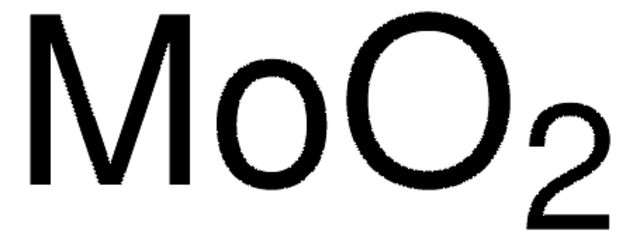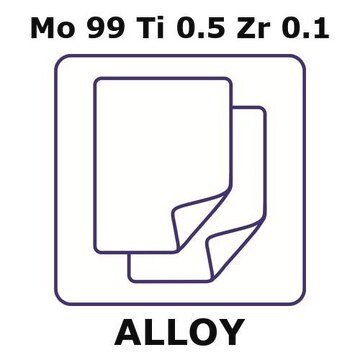266922
Molybdenum
foil, thickness 0.1 mm, ≥99.9% trace metals basis
Sinonimo/i:
Molybdenum element
About This Item
Prodotti consigliati
Livello qualitativo
Saggio
≥99.9% trace metals basis
Stato
foil
Resistività
5.0 μΩ-cm, 20°C
Spessore
0.1 mm
P. ebollizione
4612 °C (lit.)
Punto di fusione
2617 °C (lit.)
Densità
10.3 g/mL at 25 °C (lit.)
Stringa SMILE
[Mo]
InChI
1S/Mo
ZOKXTWBITQBERF-UHFFFAOYSA-N
Descrizione generale
Quantità
Codice della classe di stoccaggio
13 - Non Combustible Solids
Classe di pericolosità dell'acqua (WGK)
nwg
Punto d’infiammabilità (°F)
Not applicable
Punto d’infiammabilità (°C)
Not applicable
Dispositivi di protezione individuale
Eyeshields, Gloves, type P3 (EN 143) respirator cartridges
Scegli una delle versioni più recenti:
Possiedi già questo prodotto?
I documenti relativi ai prodotti acquistati recentemente sono disponibili nell’Archivio dei documenti.
I clienti hanno visto anche
Articoli
Can there be an effective strategy for finding breakthrough materials, since they are, by definition, unpredictable? One answer is found in Combinatorial Materials Science techniques, which represent a powerful approach to identifying new and unexpected materials.
Biomedical implants are essentially foreign substances within the human body that must survive many years’ exposure to demanding mechanical and physiological conditions. Despite these challenges, metal implants have been widely used to substitute for or rebuild hard tissues such as bones and teeth.
Il team dei nostri ricercatori vanta grande esperienza in tutte le aree della ricerca quali Life Science, scienza dei materiali, sintesi chimica, cromatografia, discipline analitiche, ecc..
Contatta l'Assistenza Tecnica.





